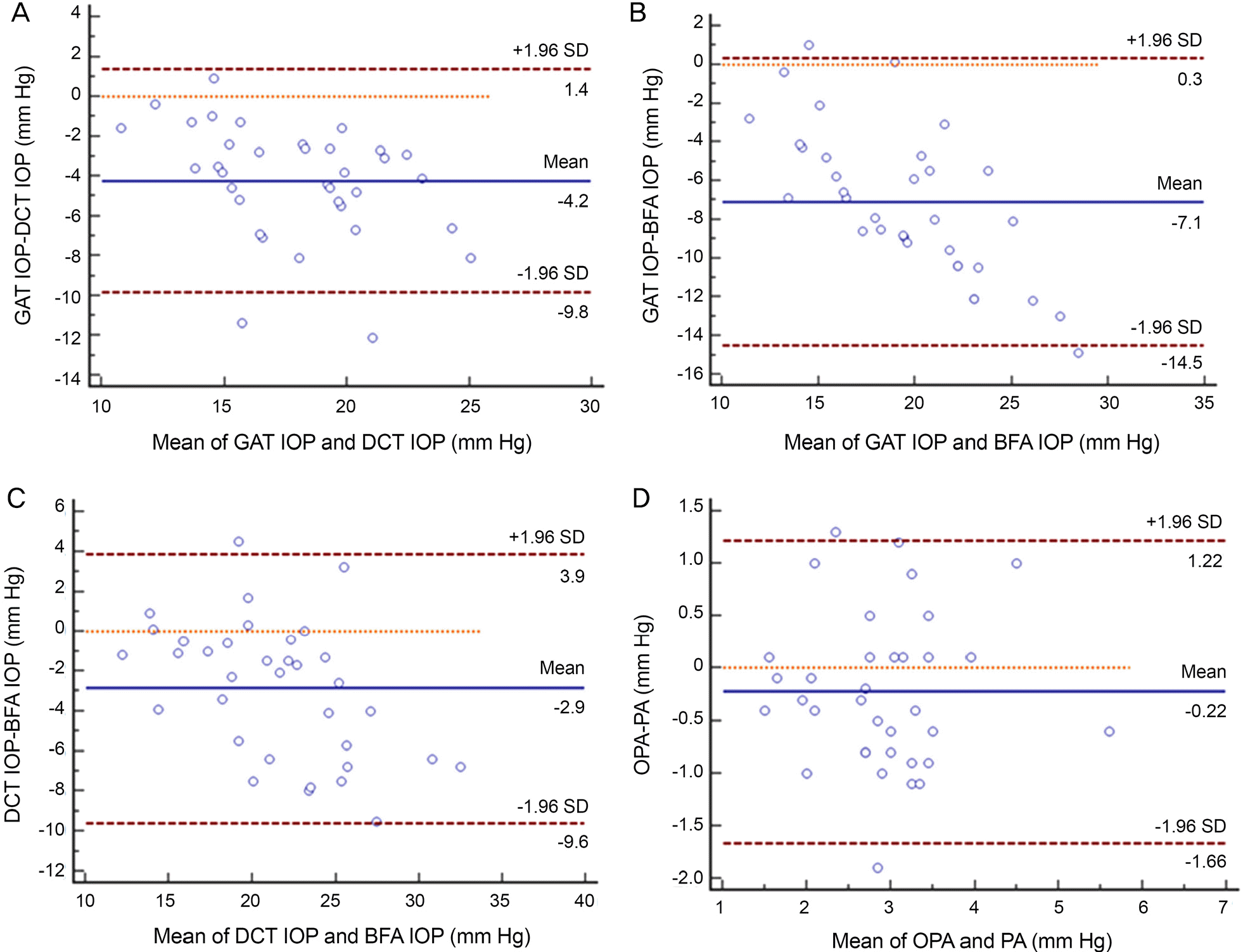1. Fontana L, Poinoosawmy D, Bunce CV. . Pulsatile ocular blood flow investigation in asymmetric normal tension glaucoma and normal subjects. Br J Ophthalmol. 1998; 82:731–6.

2. Kerr J, Nelson P, O'Brien C. A comparison of ocular blood flow in untreated primary open-angle glaucoma and ocular hypertension. Am J Ophthalmol. 1998; 126:42–51.

3. Kerr J, Nelson P, O'Brien C. Pulsatile ocular blood flow in primary open-angle glaucoma and ocular hypertension. Am J Ophthalmol. 2003; 136:1106–13.

4. Kergoat H. Using the POBF as an index of interocular blood flow effects during unilateral vascular stress. Vision Res. 1997; 37:1085–9.

5. Centofanti M, Migliardi R, Bonini S. . Pulsatile ocular blood flow during pregnancy. Eur J Ophthalmol. 2002; 12:276–80.

6. Grieshaber MC, Katamay R, Gugleta K. . Relationship between ocular pulse amplitude and systemic blood pressure measurements. Acta Ophthalmol. 2009; 87:329–34.

7. Choi J, Lee J, Park SB. . Factors affecting ocular pulse ampli-tude in eyes with open angle glaucoma and glaucoma-suspect eyes. Acta Ophthalmol. 2012; 90:552–8.

8. Kaufmann C, Bachmann LM, Robert YC, Thiel MA. Ocular pulse amplitude in healthy subjects as measured by dynamic contour tonometry. Arch Ophthalmol. 2006; 124:1104–8.

9. Stalmans I, Harris A, Fieuws S. . Color doppler imaging and ocular pulse amplitude in glaucomatous and healthy eyes. Eur J Ophthalmol. 2009; 19:580–7.

10. De Moraes CG, Reis AS, Cavalcante AF. . Choroidal ex-pansion during the water drinking test. Graefes Arch Clin Exp Ophthalmol. 2009; 247:385–9.

11. Aykan U, Erdurmus M, Yilmaz B, Bilge AH. Intraocular pressure and ocular pulse amplitude variations during the Valsalva maneuver. Graefes Arch Clin Exp Ophthalmol. 2010; 248:1183–6.

12. Dastiridou AI, Ginis HS, De Brouwere D. . Ocular rigidity, oc-ular pulse amplitude, and pulsatile ocular blood flow: the effect of intraocular pressure. Invest Ophthalmol Vis Sci. 2009; 50:5718–22.

13. Kanngiesser HE, Kniestedt C, Robert YC. Dynamic contour ton-ometry: presentation of a new tonometer. J Glaucoma. 2005; 14:344–50.
14. Silver DM, Farrell RA. Validity of pulsatile ocular blood flow measurements. Surv Ophthalmol. 1994; 38:Suppl:S72-80.

15. Razminia M, Trivedi A, Molnar J. . Validation of a new for-mula for mean arterial pressure calculation: the new formula is su-perior to the standard formula. Catheter Cardiovasc Interv. 2004; 63:419–25.

16. Sehi M, Flanagan JG, Zeng L. . Relative change in diurnal mean ocular perfusion pressure: a risk factor for the diagnosis of primary open-angle glaucoma. Invest Ophthalmol Vis Sci. 2005; 46:561–7.

17. Kaufmann C, Bachmann LM, Thiel MA. Comparison of dynamic contour tonometry with goldmann applanation tonometry. Invest Ophthalmol Vis Sci. 2004; 45:3118–21.

18. Hsu SY, Sheu MM, Hsu AH. . Comparisons of intraocular pressure measurements: Goldmann applanation tonometry, non-contact tonometry, Tono-Pen tonometry, and dynamic contour tonometry. Eye (Lond). 2009; 23:1582–8.

19. Ouyang PB, Li CY, Zhu XH, Duan XC. Assessment of intraocular pressure measured by Reichert Ocular Response Analyzer, Goldmann Applanation Tonometry, and Dynamic Contour Tonometry in healthy individuals. Int J Ophthalmol. 2012; 5:102–7.
20. Jimenez-Roman J, Gil-Carrasco F, Martinez A. . Comparison of Goldmann applanation and dynamic contour tonometry in a pop-ulation of Mexican open-angle glaucoma patients. Int Ophthalmol. 2013; 33:221–5.

21. Lee J, Lee CH, Choi J. . Comparison between dynamic contour tonometry and Goldmann applanation tonometry. Korean J Ophthalmol. 2009; 23:27–31.

22. Realini T, Weinreb RN, Hobbs G. Correlation of intraocular pres-sure measured with goldmann and dynamic contour tonometry in normal and glaucomatous eyes. J Glaucoma. 2009; 18:119–23.

23. Haustein M, Spoerl E, Boehm AG. The effect of acetazolamide on different ocular vascular beds. Graefes Arch Clin Exp Ophthalmol. 2013; 251:1389–98.

24. Zinkernagel MS, Ebneter A. Acetazolamide influences ocular pulse amplitude. J Ocul Pharmacol Ther. 2009; 25:141–4.

25. Breusegem C, Fieuws S, Zeyen T, Stalmans I. The effect of trabe-culectomy on ocular pulse amplitude. Invest Ophthalmol Vis Sci. 2010; 51:231–5.

26. Plange N, Rennings C, Herr A. . Ocular pulse amplitude before and after cataract surgery. Curr Eye Res. 2012; 37:115–9.

27. Dastiridou AI, Ginis H, Tsilimbaris M. . Ocular rigidity, ocular pulse amplitude, and pulsatile ocular blood flow: the effect of axial length. Invest Ophthalmol Vis Sci. 2013; 54:2087–92.






 PDF
PDF ePub
ePub Citation
Citation Print
Print


 XML Download
XML Download